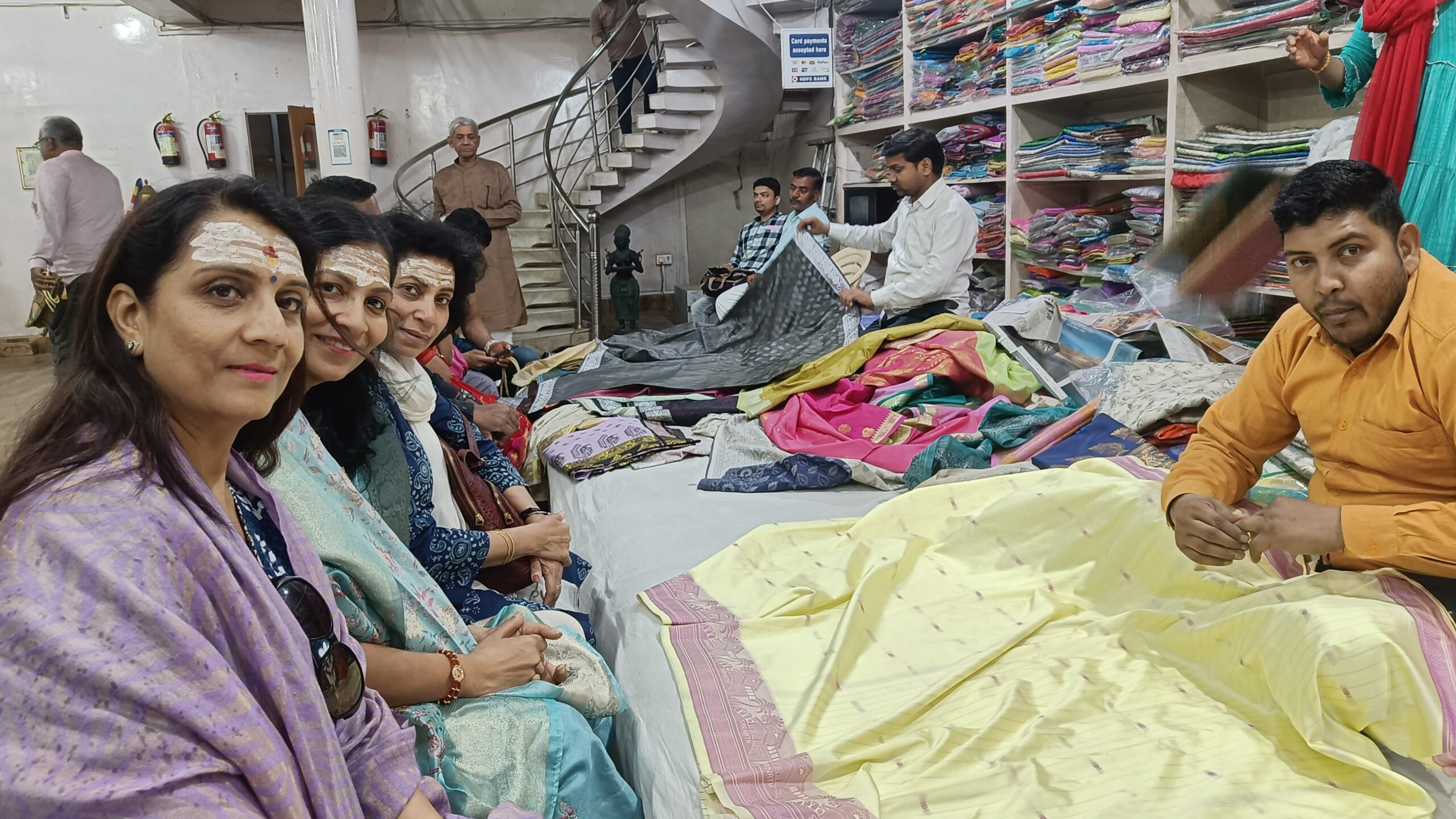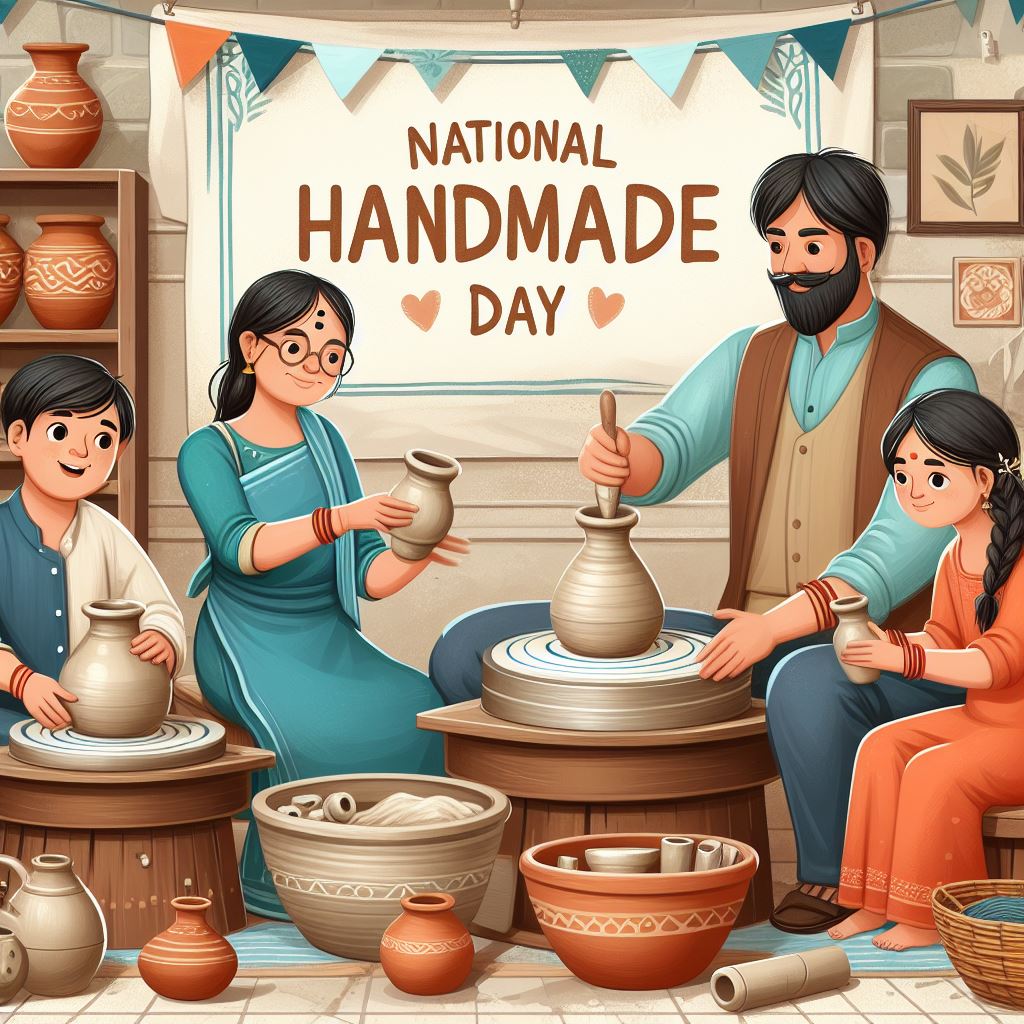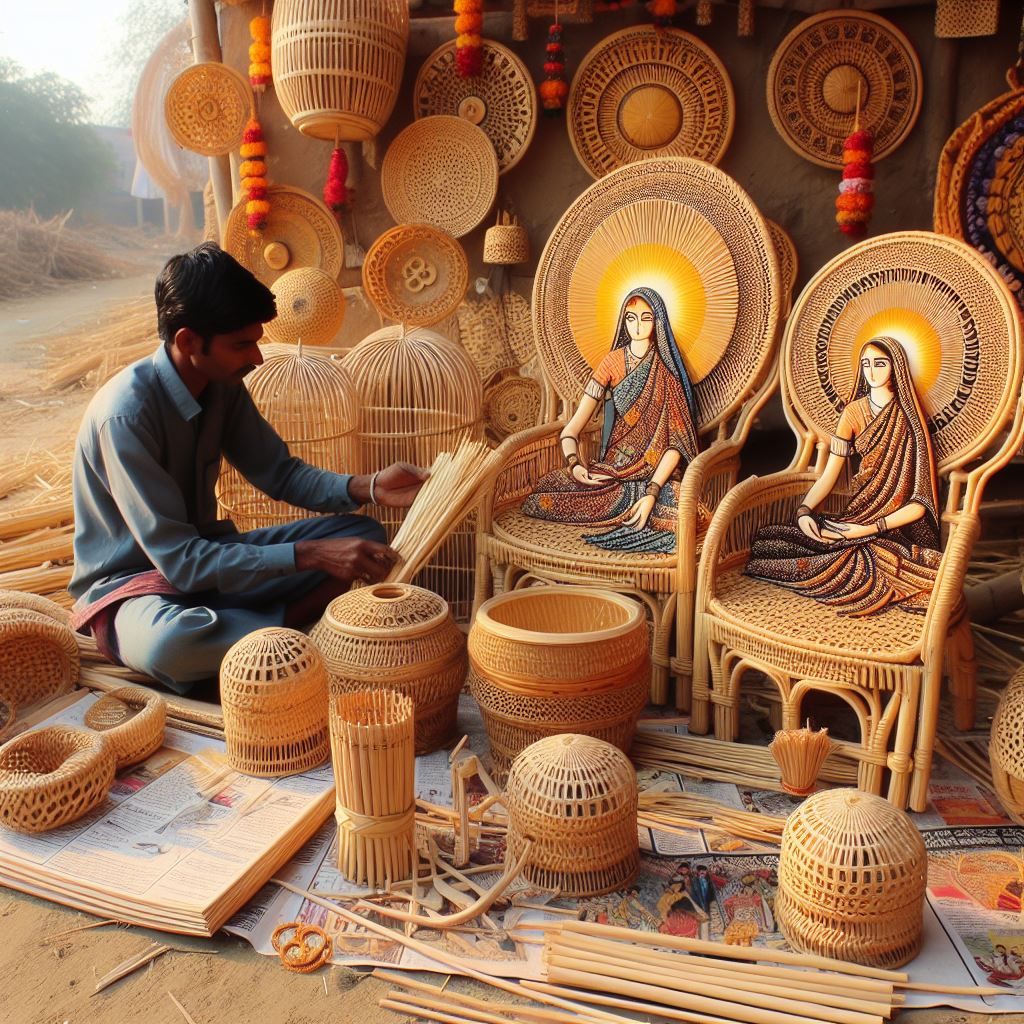Introduction
National Handmade Products Day, celebrated annually on the first Saturday of April, pays tribute to the creativity and skill of artisans who craft unique and beautiful items. Since its establishment in 2013, this day has highlighted a wide range of handmade products, including wood crafts, textiles, leather goods, toys, jewelry, pottery, and many more. In Indian culture, handmade items hold deep significance, reflecting the country’s rich heritage and traditions. These products showcase India’s cultural diversity and play a crucial role in its economy by providing employment opportunities for countless artisans across the nation.
Preserving Heritage through Government Initiatives
The Government of India has launched various schemes and programs to recognize the importance of preserving its heritage and supporting artisans. One key initiative is the National Handicrafts Development Programme (NHDP), which supports artisans and craft clusters through infrastructure development, capacity building, and research and development schemes. Additionally, the Pradhan Mantri Vishwakarma Yojana offers comprehensive assistance to artisans, ensuring their skill development and economic empowerment. The government further assists through Market Development Assistance (MDA) grants and Market Access Initiative (MAI) assistance, enabling artisans to participate in domestic and international events to showcase their crafts.
Promoting Indian Handicrafts Locally and Globally
To enhance the visibility of Indian handicrafts globally, the government focuses on brand image promotion through seminars, publicity campaigns, and exhibitions. Moreover, it facilitates live demonstrations of crafts by Master Craftspersons in exhibitions abroad, showcasing the exquisite craftsmanship to a broader audience. Notably, Prime Minister Shri Narendra Modi often presents handicraft products as gifts during foreign visits, showcasing the unique diversity of India. These efforts not only promote Indian handicrafts but also strengthen the country’s cultural diplomacy.
The 18th G20 Summit was successfully conducted at Bharat Mandapam in New Delhi last year in September 2023. Gifts such as Sundarban honey, Kashmiri saffron, Banarasi stole, Araku coffee, Darjeeling tea, and others were meticulously curated to represent the unique diversity of India. World leaders and international delegates must have appreciated the hamper’s contents, with stories behind every product.
At the recently concluded “Creator Award” function at Bharat Mandapam in March 2024, one of the participants, namely Jahni Singh, was awarded the Heritage Fashion Icon award. She is just 20 years old and an influencer promoting Indian fashion and sarees specifically.
Diverse Craftsmanship Across India
India boasts a rich tradition of handmade products across various states and regions. Textiles exhibit intricate embroideries like chikankari from Lucknow, vibrant tie-and-dye fabrics from Rajasthan, and luxurious silk weaves from Varanasi. Pottery showcases regional styles, from Gujarat’s terracotta works to Jaipur’s blue pottery. Skilled craftsmanship is evident in jewelry, with Kundan from Rajasthan, Filigree from Orissa, and Temple jewelry from the South. Woodwork features elaborate carvings from Kashmir, sandalwood items from Karnataka, and intricate furniture from Rajasthan. Leather goods range from hand-tooled bags to puppetry. India is also known for handcrafted paper products, brassware, lacquerware, and glasswork, each reflecting the nation’s cultural diversity and artistic brilliance.
Stories of Artisans
One of the most renowned handmade products in India is the Banarasi silk saree. These sarees are highly coveted for their exquisite craftsmanship and luxurious feel. Meticulously woven by skilled artisans, each saree takes days or even weeks to complete, featuring intricate designs and rich colors. Banarasi silk sarees hold immense cultural significance, often worn at weddings, festivals, and special occasions.

Purchasing Silk Sarees from Varanasi
We witnessed the craftsmanship firsthand during a visit to Varanasi in February 2024 and learned about the artisans’ dedication and the sarees’ significance in Indian culture. They have developed a plant-based silk-making process instead of the traditional mulberry silk process. Though sarees from Assam and Karnataka also hold significance.
It is pertinent to mention here that the handicraft industry is the second-largest source of employment in India after agriculture.
Famous Indian Handicrafts from States
- Andhra Pradesh: Kalamkari, Bidriware
- Arunachal Pradesh: Handwoven textiles
- Assam: Assam silk, Bamboo & Cane crafts
- Bihar: Madhubani painting, Sikki grass products
- Chhattisgarh: Bell metal crafts, Bastar art
- Goa: Cashew nut crafts, Coconut shell crafts
- Gujarat: Bandhani, Patola weaving
- Haryana: Phulkari, Clay toys
- Himachal Pradesh: Kullu shawls, Kinnauri shawls
- Jammu and Kashmir: Pashmina shawls, Paper mache
- Jharkhand: Sitalpati weaving, Sohrai painting
- Karnataka: Mysore silk, Sandalwood carving
- Kerala: Coconut shell crafts, Aranmula mirrors
- Madhya Pradesh: Chanderi fabric, Gond painting
- Maharashtra: Paithani sarees, Warli painting
- Manipur: Moirang phee, Bamboo crafts
- Meghalaya: Naga shawls, Cane and bamboo crafts
- Mizoram: Puan fabric, Bamboo baskets
- Nagaland: Naga shawls, Wood carving
- Odisha: Pattachitra, Silver filigree
- Punjab: Phulkari, Punjabi jutti
- Rajasthan: Bandhani, Meenakari
- Sikkim: Thangka painting, Bamboo crafts
- Tamil Nadu: Kanchipuram silk, Tanjore painting
- Telangana: Bidriware, Cheriyal scroll painting
- Tripura: Bamboo crafts, Bamboo and cane work
- Uttar Pradesh: Chikankari, Zardozi
- Uttarakhand: Pashmina shawls, Wood carving
- West Bengal: Kantha embroidery, Dokra metal crafts
Famous Indian Handicrafts from the Union Territories
- Andaman and Nicobar Islands: Coconuts, Cane & Bamboo, Shell and Palm products
- Dadar and Nagar Haveli: Ivory carving, tortoiseshell crafts, mat weaving.
- Daman and Diu: Warli paintings
- Lakshadweep: Sea products like shells, corals, oysters, and stones
- Puducherry: Fine fabrics, semi-precious stones, handmade incense and perfumes. Candles, marbled silks, and aromatherapy products
- Ladakh: Carpet Weaving, Ladakhi Garment, Embroidery, Namda Making, Silver Filigree/Blacksmithing, Fresco Painting (Thanka Painting), and Clay Moulding (Sculpture)
The Impact of Celebrating National Handmade Products Day
Handmade Products Day sheds light on artisans’ talents, boosting their income and preserving traditional crafts. Supporting local artisans not only improves livelihoods but also stimulates local economies.
The handmade industry significantly contributes to the economy through sales and exports. Showcasing these unique products attracts tourists, further boosting local economies. Increased demand translates to better wages and standards of living for artisans, empowering them economically. Overall, this day celebrates cultural heritage, promotes economic growth, and enhances artisans’ and communities’ well-being.
The Indian Handicraft market value was at US $ 3968 million in 2022 and is expected to reach US $ 5583 million by 2028.
How to Support Indian Handmade Products
Supporting Indian artisans is easy and impactful. Consider buying directly from artisans or cooperatives to ensure fair compensation. Promote their work on social media to increase visibility and sales. Visiting craft fairs provides direct support and allows learning about traditional crafts. Gifting handmade products spreads awareness and appreciation for artisanal skills. Assist artisans in digitizing their products for online promotion and sales. Look for authentic Indian handmade products on online platforms such as Jaypore, Fabindia, or CraftsBazaar, ensuring quality and supporting artisans directly with every purchase.
Delhi, the capital city of India
Delhi has many famous state emporiums and also Khadi Bandar is located in Connaught Place. In addition, there are three Haats located at INA, Janakpuri, and Pitampura. There are numerous events and exhibitions promoting Handmade and Handicraft products regularly.
Art & Craft Niche
The art and craft market is also expanding at a fast rate. It can be a good option for bloggers, influencers, and micro-entrepreneurs to take this segment seriously. Art and craft supporting materials manufacturing and supply chain is expanding. I know many urban, highly educated individuals who have turned their hobby into a craft profession operating as a solopreneur. The present growth of digital infrastructure is helping them—especially social media. I can be of guidance in micro-entrepreneurship niche selection. Under guidance, the above-seen lady has taken up art & craft as a profession, a total career shift from education to solopreneurship.
Conclusion
In conclusion, National Handmade Products Day serves as a reminder of the significance of supporting Indian handmade products. By actively participating in this celebration, we not only acknowledge the rich heritage of Indian craftsmanship but also contribute to the livelihoods of artisans across the country. Each handmade item represents a unique story and tradition, reflecting the diverse cultures and skills in every corner of India. Together, let’s continue to cherish and promote the rich heritage of Indian craftsmanship, significantly impacting the lives of artisans and their communities.

Wg Cdr Sanjeev Saxena (Veteran)
Digipreneur & Freedompreneur.
Life & Business Coach
#MissionFreedom


We had purchased silk sarees from Varanasi